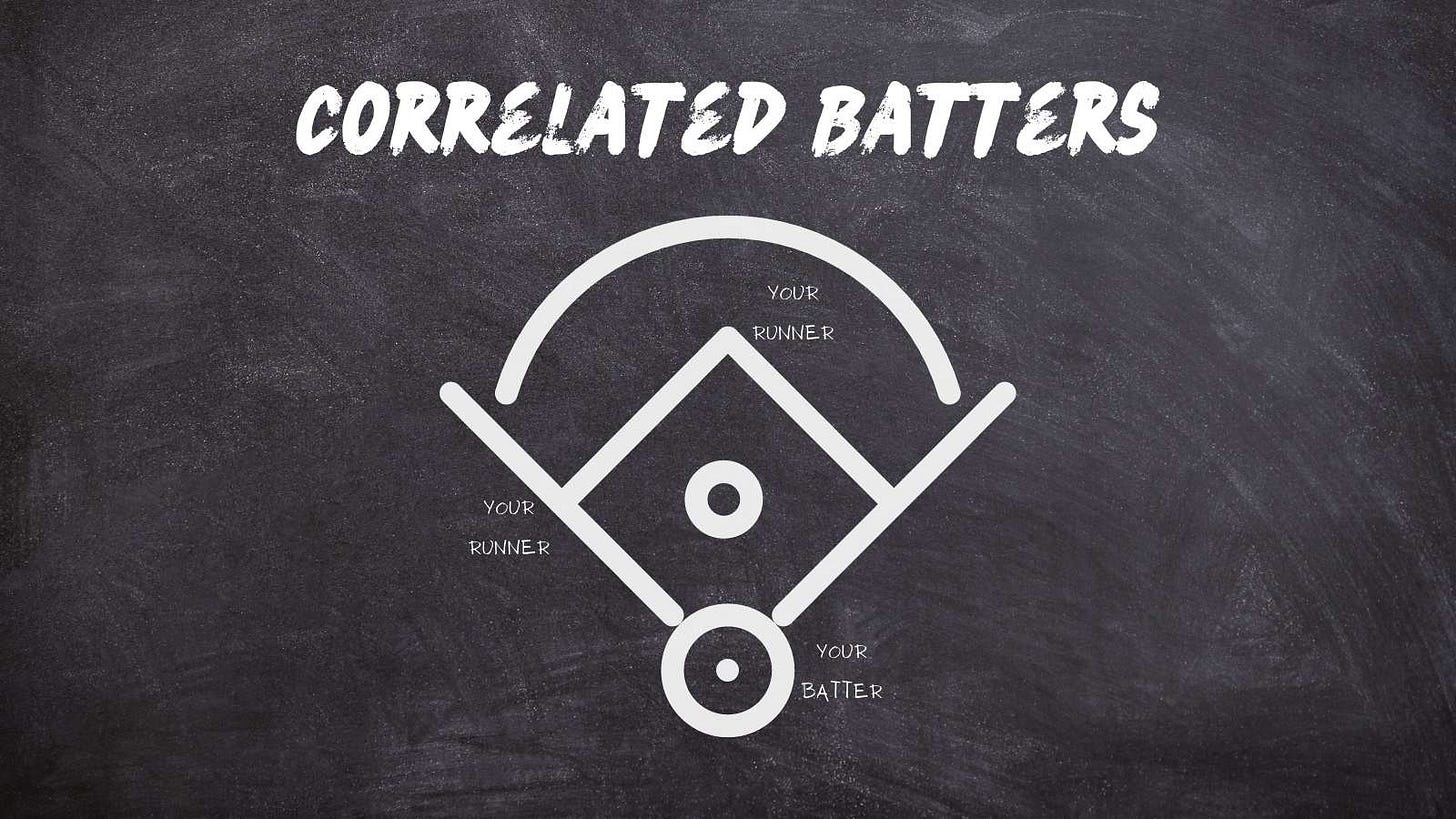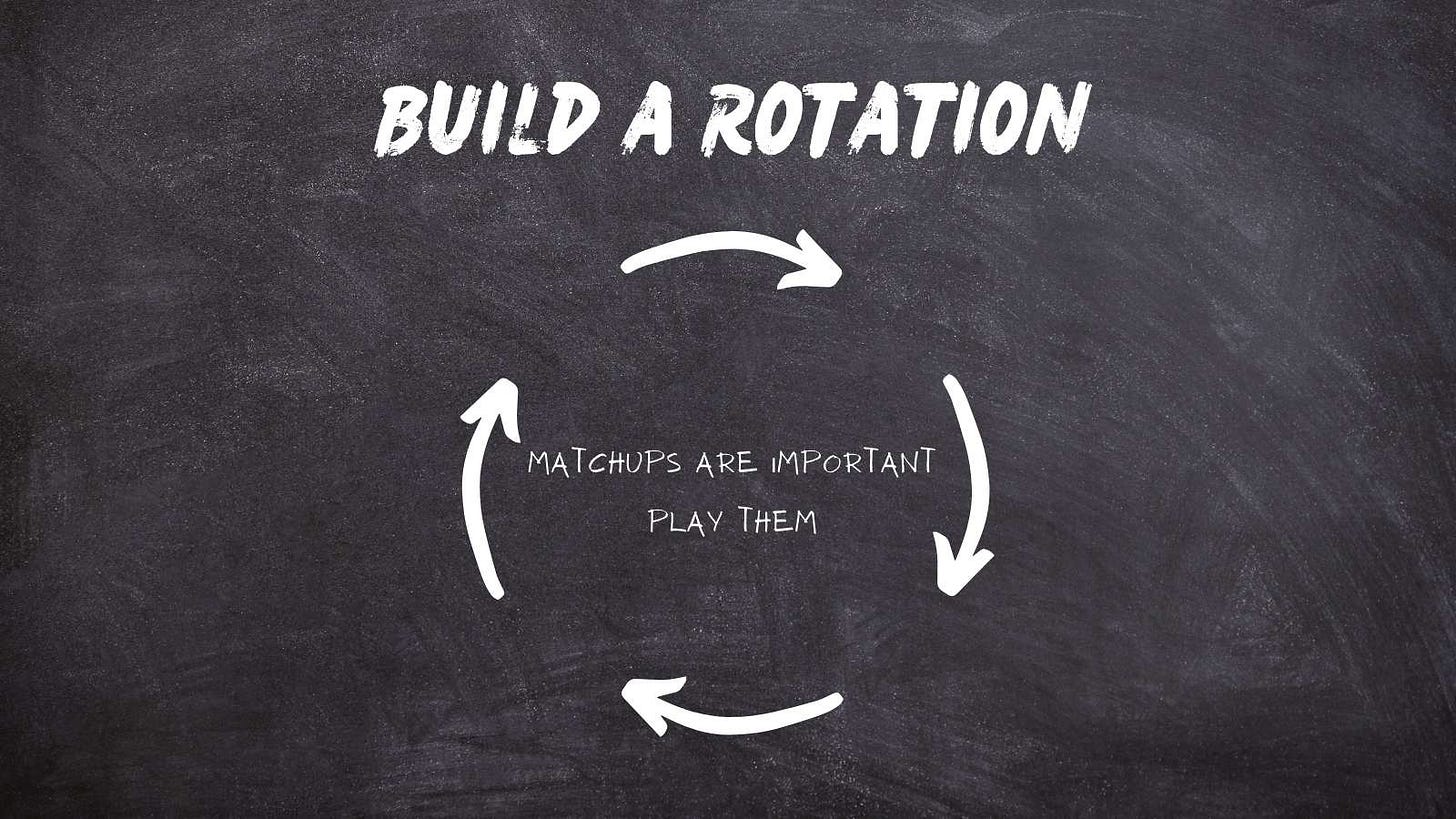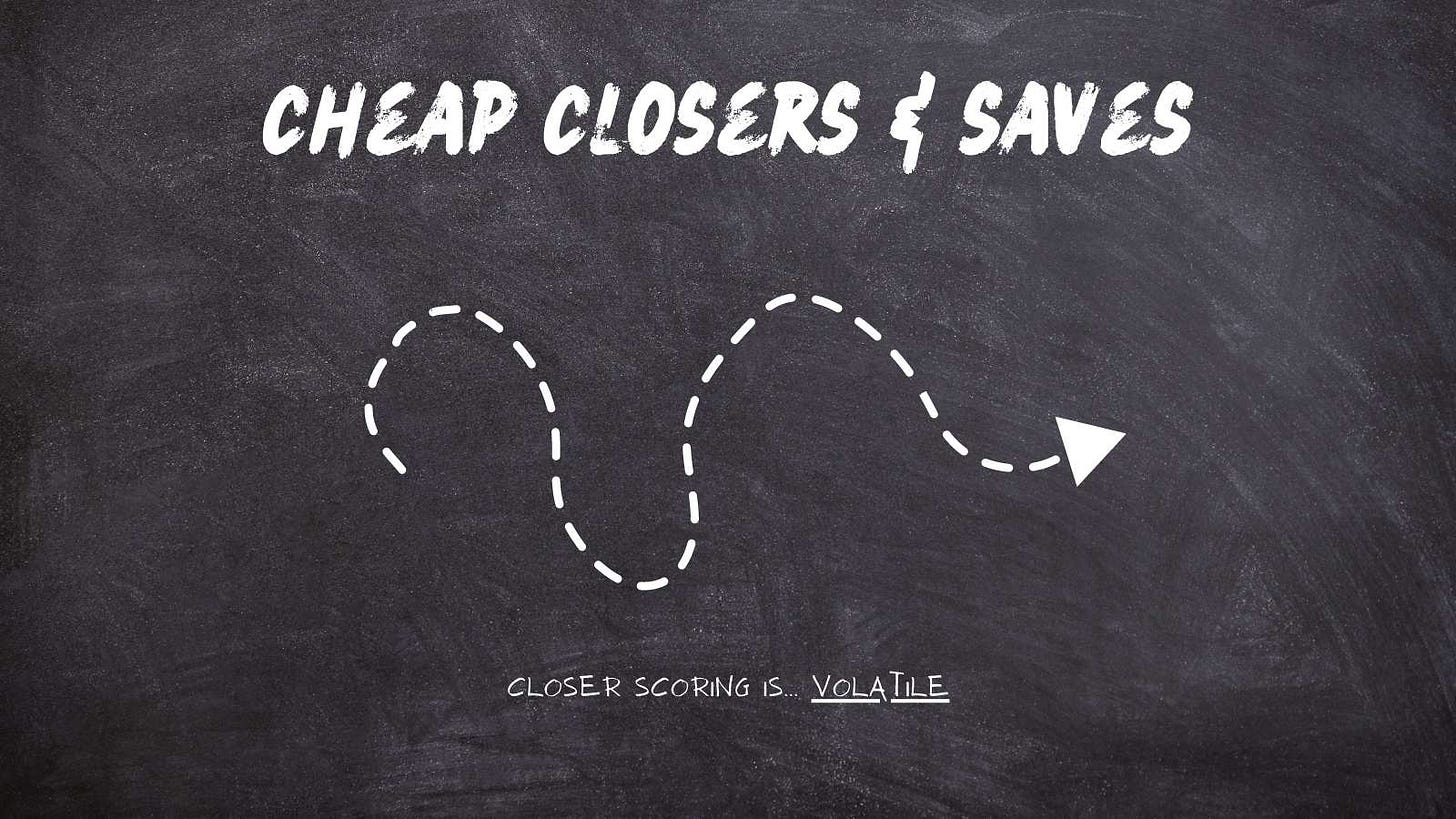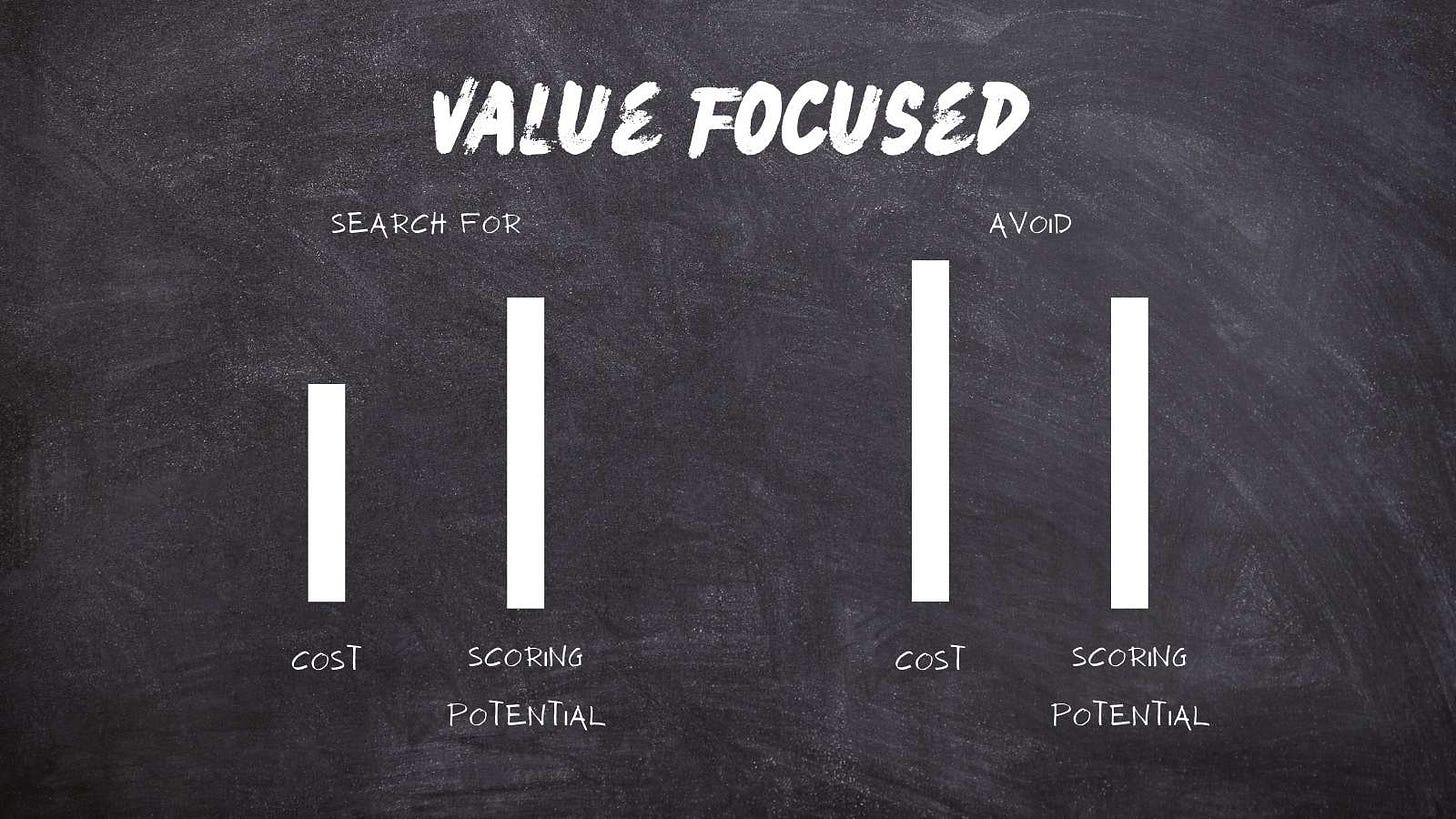Sorare MLB: Starting Over For '23
Lots of learning happens in your first 6-months, don't repeat my mistakes.
Bear market be damned.
In 4 months on SorareMLB, my gallery value grew by 26%.
The gut punch?
I should have done far better.
Here's the longer, written version of what I'd do if starting over in '23.
Build 2 Rosters of Correlated Batters
For each scarcity you intend to compete in.
Maximizing Your Entries Increases the Chance of Rewards
Whether you are competing in limited competitions or duking it out with whales in Super Rare, ensuring you have as many shots at victory as possible is key.
It seems entirely possible Sorare MLB rolls out more than the current 2 competitions per scarcity at some point. For now, though, you just need to ensure that you have two full rosters of startable players for each of your targeted scarcities.
*Note: You can currently start lower scarcity players in higher tiers, but that is not expected to last forever, so I will plan to cover that avenue separately.
To fill these rosters, you want exposure to upside on a weekly basis. Which brings us to…
Seek Correlated Batter Mini-Stacks (2-3 / team)
This helps turn good weeks into great ones.
Stacks are a common strategy in DFS (daily fantasy sports).
By stacking multiple players (batters, in this case) from a single team, you open yourself up to be graced by the gods of variance.
Variance, for us, means increasing potential upside and potential downside on a week-to-week basis.
I know what you are saying at this point, “I don’t want MORE downside.” But here’s the thing:
You can’t/shouldn’t expect to win each game week (GW). So your “downside” on bad weeks is missing the reward cut by a little more than you would have otherwise. Either way, your reward was 0. But you should want to win MORE in the times you do make the cut. That’s what we are after.
Having batters from the same team clustered together on your roster can mean double and even triple dipping into the point pool, helping turn good → great.
Let’s think of an example:
You could reasonably stack stud Astros.
Alvarez, Tucker, Bregman, and Altuve all come to mind as solid candidates, but there are more on such a stacked team.
On weeks where the bats come alive (when facing poor pitching, especially) then a home run for Tucker could reasonably score Bregman and Alvarez if you were employing a 3 man stack (assuming Bregman and Alvarez hit before Tucker). Meaning you would earn the points for RBI’s and the homer for Tucker, plus the runs scored for Bregman and Alvarez, and whatever points you’d already earned when the first two got on base.
When this happens, you get leveraged (read: boosted) exposure to plus matchups.
By proposing all this I am assuming you have some kind of budget constraint. If you don’t then simply buying the best players of each position regardless of cost would likely result in the highest point floor each week, while still ensuring spikes based on sheer talent.
But you, me, and most of the market don’t have that luxury.
All this is to say that we are trying to squeeze as many points as possible from a limited budget.
More on picking that budget now.
Pick a Manageable Budget
First and foremost - this is a game. It's supposed to be fun!
Therefore, my budget creation and management strategy revolves around setting your own personal budget at a point that allows you to compete but doesn’t cause actual anxiety.
Put differently, don't spend yourself into constant worry!
Let’s put some numbers to this:
Constrained Budget
Say you’ve heard about Sorare MLB, and want to get rolling, but don’t want to break the bank. Learning and maybe winning some cards here and there is enough for now.
If this sounds like you, starting with limited competitions and setting a relatively low goal makes perfect sense. Let’s use .25 ETH as an arbitrary benchmark here. But you can adjust the numbers however you see fit.
Budget-wise, we need to stay on target for the .25 ETH, while also looking to enter both limited competitions each week.
Going a step further, this means roughly .125 ETH per squad - or .0147 ETH per player.
.25 / 17 = .0147 ETH / player
This is assuming two full lineups (14) plus an additional 3 SPs in rotation.
Those familiar with DFS will start to see this .0147 as a rough average “salary” value where the goal is to squeeze more performance out of each ETH spent.
More on that later.
Speaking of DFS, your final consideration here is how to spend that ETH. Average all the way through? Studs and Duds? I’ve touched on this thinking in past articles but the short version is that this is up to you, and will depend on your relationship with risk.
This is the art of the process, and you will learn your own tendencies over time.
Taking into account the goal to create mini stacks, I would recommend having a couple studs to anchor your stacks, then building around those studs with correlated hitters.
You can find more notes on building your pitching rotation in the next section.
Do this and soon you will emerge with a targeted, card-winning machine. One where most of your cards are working for you each and every week.
Rotate 5+ Starting Pitchers
In '22 I underestimated number of needed Starting Pitchers. From a raw points perspective, they simply do not measure up to good batters over the course of a complete season.
But each GW presents a different story.
SPs are volatile - in both appearances and matchups - but picking the proper upside play in the proper GW can lift you into a top-tier reward.
And you don’t need 5 aces to make this happen. Cheap pitchers can shred bad teams. You just need enough of them to account for the fact that each starter will likely only pitch every other game week, on average.
Your job here is to master the SP mix-and-match game.
This will mean toeing the line between upside 3/4 starters and consistent aces to build a group where you have 2 startable options each week, hopefully with appealing matchups.
As you begin to win cards throughout the season, this is a great spot in your roster to look to expand from your original starting 5. More pitchers in rotation means more choices in the matchup game and an improved ability to overcome the inevitable injury bug.
I’ll be with you every step of the way looking for pitching gems that would make for solid additions to your rotation.
Cheap Closers & Saves
I know I said Starting Pitchers were volatile. But Spencer Strider excluded - Relief Pitchers are hyper-volatile.
It isn’t their fault necessarily.
Closers are there to close out close games (see what I did there?). Thus the name. In a given game week that means not only does their team need to play, but they need to be winning, and only winning by a small margin, in order for the Closer to even have a chance at a save.
I’m simplifying a tad here, but see all those AND logical statements? A lot needs to go right for an RP to earn you those 10 points for a save (or those 5 points for a hold).
And, in order to have a good GW compared to their peers, RPs typically need to do it all multiple times.
Yuck.
This smells like a great way to trap valuable budget for managers.
Buying cheap options mitigates this, while still giving you exposure to the much-needed Save category. Cheap Closers get saves too.
When you are just starting out, filling the RP slot can safely be one of the last things you do. It is more of a luxury that helps boost your weekly point floor, but comes at the cost of huge week-to-week volatility.
As you begin to expand, having multiple cheaper closers to rotate in and out in the same way as Starting Pitchers would be my currently preferred progression.
The inverse of this, which is also valid, is parlaying your cheaper guys into a single set-it-and-forget-it stud to lock in each week.
Value Focus
And now we get into the most important tenet of them all: Value.
This is, in my opinion, the thing that can provide you the most leverage against other managers, while also giving you the best shot at positive ROI in terms of card winnings.
Sounds pretty great right?
It is all made possible because market value and statistical (fantasy) value often don't align. Until we reach a point where the market is perfectly efficient (cough… not likely) there will always be players whose expected performance is greater than their cost, and players whose expected performance is less than their cost.
This serves as a wonderful reminder:
Don't buy cards just because they are expensive! That is a signal that the market believes those players are the most valuable. While sometimes true, it would be more accurate to simply say those players are the most popular. Popularity is not a 1:1 for scoring impact.
To combat this, I propose doing the opposite:
Buy players & stacks OUT of the limelight. Everybody and their cousin wants to stack the Astros, Dodgers, and Mets. Let ‘em. When everyone zigs it is high time that you, dear reader, zag.
When so much of the money is focused on this narrow band of players, you can begin to chunk out more value on the weeks the crowd is wrong, simply by being different.
To do this, think of strong-hitting teams that fall under the radar, such as the Red Sox, White Sox, Rangers, and even the Mariners.
But value seeking is not limited to just your stacks.
By following me and reading this far, you know I love squeezing performance out of players that are overlooked - be they second-tier rookies, productive veterans, or beautiful post-hype sleepers (looking at you Kelenic).
Any way you slice it, you want guys who can bring you more points than the price you paid for them. You want cheap performance.
I’ll work to bring you the best value plays each week, from a high level here in the free section, and more granular (once up and running) in the premium section, of this Substack.
TLDR - This is the script I'd follow for '23
There you have it everyone. My lessons learned distilled down into a (hopefully) actionable article to help you prepare for the upcoming season.
Here are the highlights, just to refresh your memory before we part:
→ Build 2 rosters of correlated batters (for each scarcity)
→ Pick a manageable budget - don't overspend
→ Rotate 5+ Starting Pitchers
→ Cheap Closers & Saves
→ Value Focus

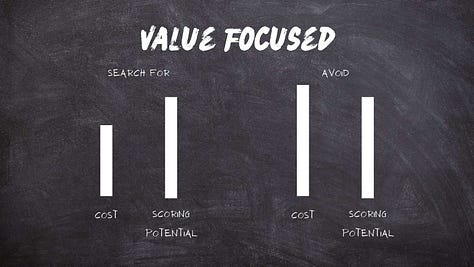

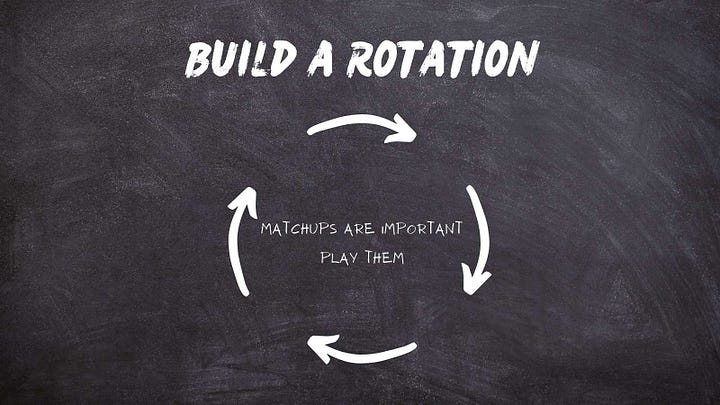
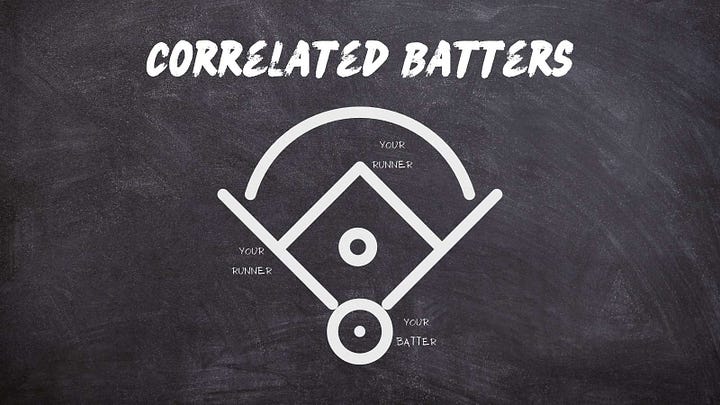
By doing all this, you will stay within your means and compete in your chosen contests with regularity. You will see better returns on your overall investment by not overextending yourself, and in the meantime, you should not need to worry as much about sinking precious ETH into the game and not seeing results.
Just a reminder - while I am advocating for a certain strategy in a game we all play, none of this is to be taken as financial advice. I am not a financial advisor, and this a game, not an investment in the traditional sense. Please do your own research before spending any of your hard-earned ETH.
As always, thank you all for reading, please feel free to drop a comment about your favorite part, or something you’d like to see me dig into further!
Let’s go win!





